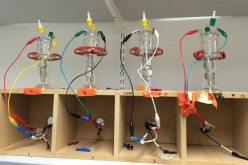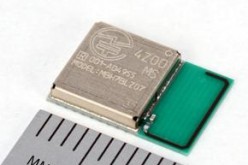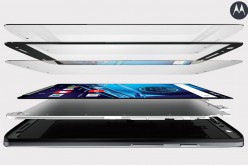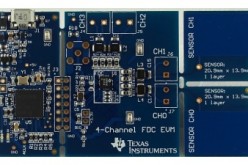AMD R-Series APU with DDR4 support
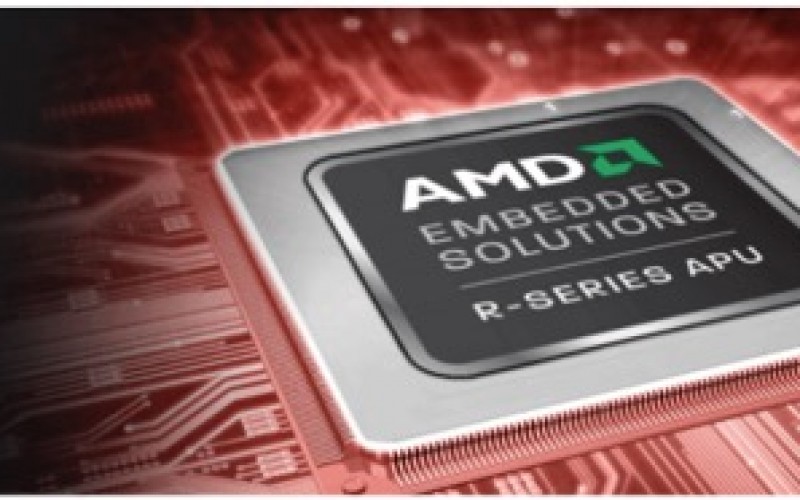
AMD announced new Embedded R-Series SOC processors codenamed as “MERLIN FALCON” that establish performance leadership across a targeted range of embedded application market requirements for digital signage, retail signage, medical imaging, electronic gaming, media storage and communications and networking.
These processors incorporate 64-bit x86 CPU core(” Excavator”) , 3rd generation GCN architecture and power management for reduced energy consumption. The single-chip system-on-chip (SOC) architecture enables simplified, small form factor board and system designs from AMD customers and a number of third party development platform providers, while providing astounding graphics and multimedia performance, including capability for hardware-accelerated decode of 4K video playback. It also supports latest DDR4 memory, so you can get an astounding performance from this APUs.
With the latest generation AMD Radeon graphics as well as the latest multimedia technology integrated on-chip, AMD Embedded R-series SoC provides enhanced GPU performance and support for High Efficiency Video Coding(HEVC) for Full 4K Decode and DirectX 12. The new AMD Embedded R-Series SOCs offer 22% improved GPU performance when compared to the 2nd Generation AMD Embedded R-Series APU and 58 % advantage against the Intel Broadwell Core i7 when running graphics-intensive benchmarks.
R-Series APU
Specifications of the integrated graphics include :
- 8 Compute units and 2 rendering blocks
- Supports for FP4 package
- GPU clock speed : 800 Mhz
- GFLOPS: 819 GFLOPS
- API Support: DirectX 12
- First embedded processor with dual-channel 64-bit DDR4 or DDR3 with Error-Correction Code (ECC), with speeds up to DDR4-2400 and DDR3-2133, and support for 1.2V DDR4 and 1.5V/1.35V DDR3.
- Dedicated AMD Secure Processor supports secure boot with AMD Hardware Validated Boot (HVB); initiates trusted boot environment before starting x86 cores.
High-performance Integrated FCH(Fusion Controller Hub) featuring PCIe® Gen3 USB3.0, SATA3, SD, GPIO, SPI, I2S, I2C, UART slots.
Fully HSA enabled
Customers in embedded application market requirements for digital signage, retail signage, medical imaging, electronic gaming, media storage and communications and networking requires parallel processing algorithms. HSA is a standardized platform design that unlocks the performance and power efficiency of the GPU as a parallel compute engine. The AMD Embedded R-Series APU platform incorporates a full HSA implementation which balances the performance between the CPU and GPU. Leveraging the heterogeneous Unified Memory Architecture (hUMA) allows for reduced latencies and maximizes memory access to both the CPU and GPU to increase performance.
Design for Embedded Applications
AMD Embedded R-series APUs SoC includes features such as industrial temperature support, dual-channel DDR3 or DDR4 support with ECC (Error Correction Code), Secure Boot, and a broad range of processor options such as configurable thermal design power (cTDP) allows designers to adjust the TDPs from 12W to 35W in 1W increments for greater flexibility. The AMD Embedded R-Series SOC also has a 35 percent reduced footprint when compared to the 2nd Generation AMD Embedded R-Series APU, making it an excellent choice for small form factor applications. This is the first processor from AMD to support DDR4 Memory.
The most important thing is AMD R-series APU provides 10 year of longevity of supply. The processors support Microsoft® Windows® 7, Windows® Embedded 7 and 8 Standard, Windows® 8.1, Windows® 10, and AMD’s all-open Linux® driver including Mentor Embedded Linux from Mentor Graphics and their Sourcery CodeBench IDE development tools.
Performance
According to AMD and Benchmarks such as 3DMark, RX-421BD APU running at higher frequency at 15W is on top with the previous generations RX-427BB (Bald Eagle, Kaveri-based) at 35W.
Conclusion
These R-series APU comes with same silicon as carrizo, but featuring support for DDR4 memory. If it is using same silicon as Carrizo, then why to keep customers waiting for DDR4 memory support in their next generation of APUs. They have provided long term longevity for 10 years. These R-series APU combines south bridge so that it support for peripherals on the same die which helps to reduce 30% carbon footprint on the processors. These processors targets at the gaming machine such as poker, communication infrastructure, industrial control/automation, storage, medical, security/surveillance and retail signage.






